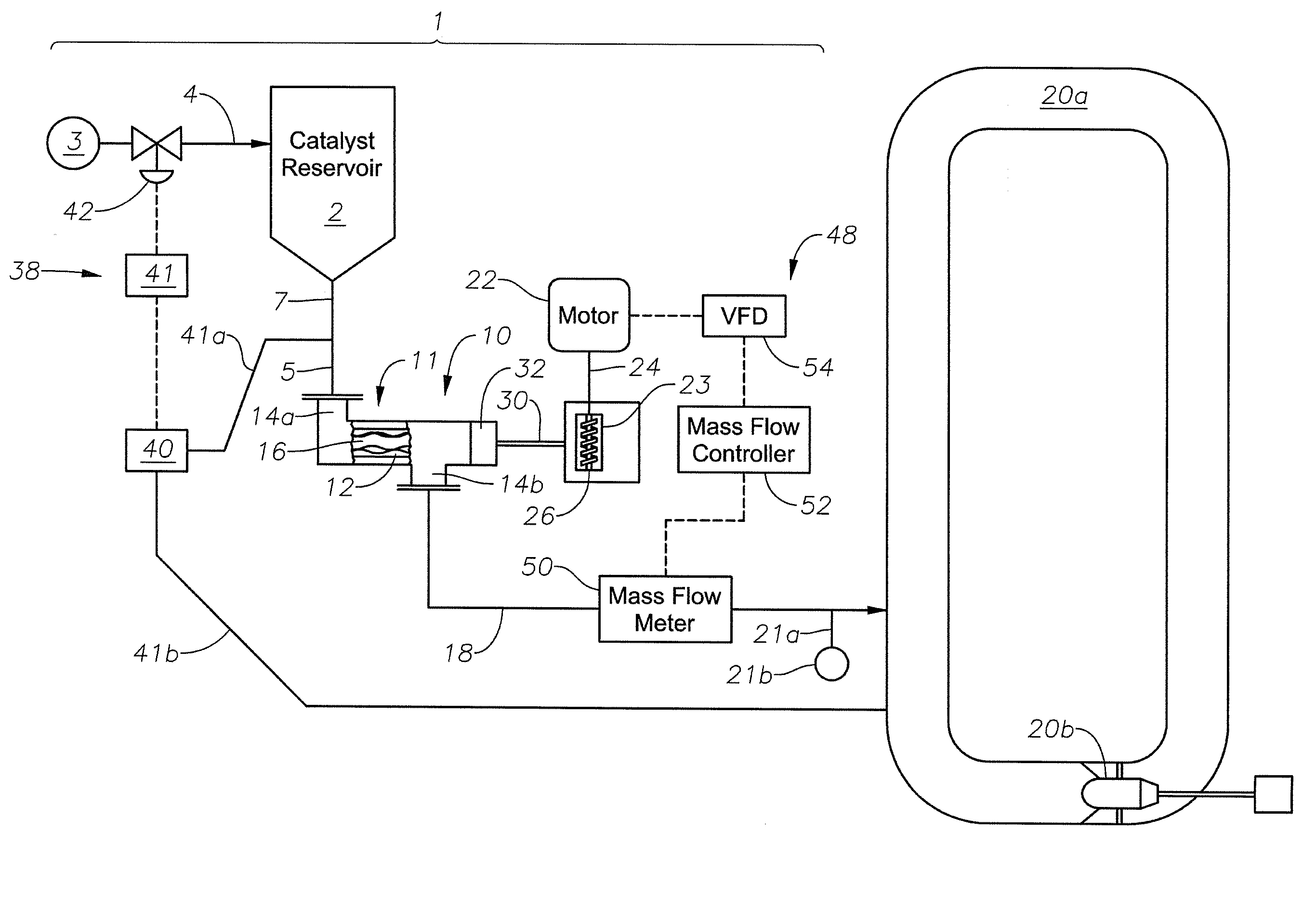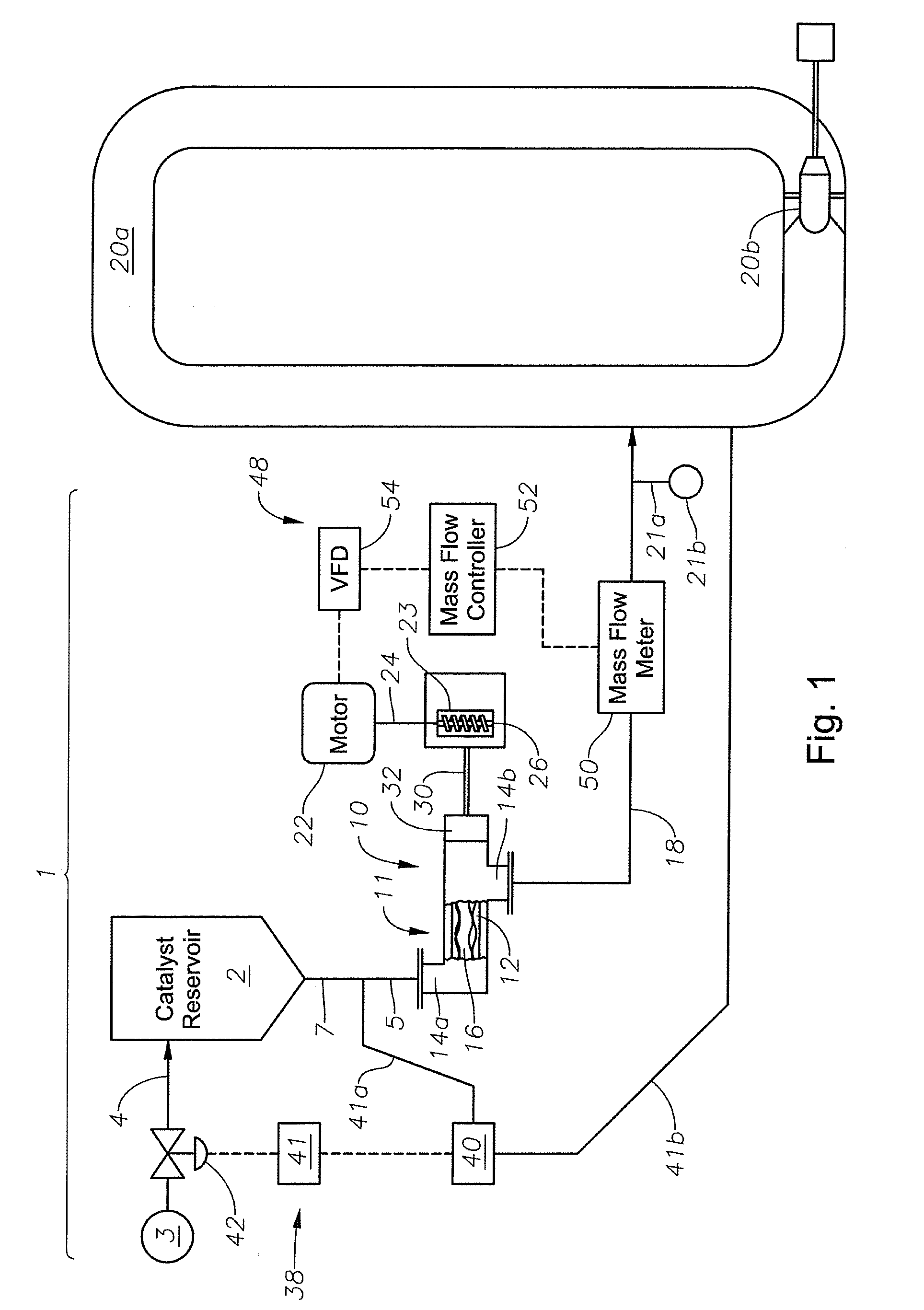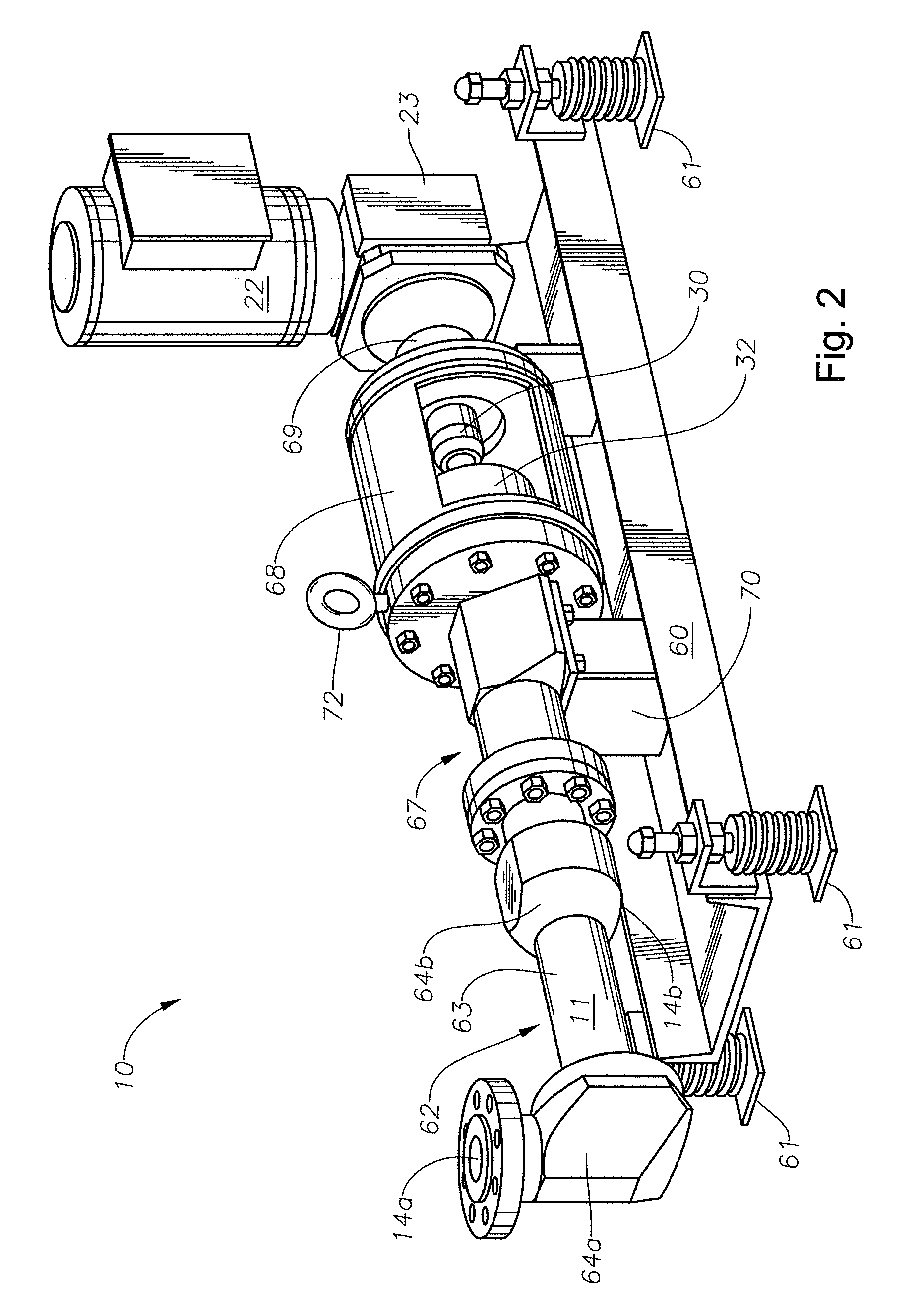System and Method for Providing a Continuous Flow of Catalyst Into a Polyolefin Reactor
a polyolefin reactor and catalyst technology, applied in the direction of machines/engines, liquid fuel engines, positive displacement liquid engines, etc., can solve the problems of unfavorable catalyst flow, catalyst tends to non-uniformly accumulate in localized regions, and the catalyst feed system often provides undesirable non-uniform catalyst concentrations within the reactor loop, etc., to facilitate the flow of catalyst slurry, reduce work load and wear, and prevent fouling
- Summary
- Abstract
- Description
- Claims
- Application Information
AI Technical Summary
Benefits of technology
Problems solved by technology
Method used
Image
Examples
Embodiment Construction
[0027]With reference now to FIG. 1, the catalyst feed system 1 of the invention includes a reservoir 2 for containing a supply of mud-like catalyst slurry. Reservoir 2 is connected to a source 3 of pressurized diluent via a conduit 4. Reservoir 2 further has an outlet 5 located at the distal end of a discharge conduit 7. The system 1 further includes a progressive cavity pump 10 having a stator and rotor assembly 11. The stator 12 of the assembly 11 includes an inlet 14a connected to the outlet 5 of the reservoir 3, and a discharge outlet 14b. A rotor 16 rotates within the inner diameter of the stator 12 to pump catalyst slurry through the outlet 14b and the outlet pipe 18 to one of the loops 20a of a polyolefin reactor. Reactor loop 20a includes a pump 20b for circulating reactor effluent during the manufacture of a polymer. A flush line 21 a connected to a source of recycled, pressurized diluent 21b is connected to the outlet pipe 18 for expediting the flow of catalyst slurry to t...
PUM
| Property | Measurement | Unit |
|---|---|---|
| diameter | aaaaa | aaaaa |
| pressure | aaaaa | aaaaa |
| internal pressure | aaaaa | aaaaa |
Abstract
Description
Claims
Application Information
 Login to View More
Login to View More - R&D
- Intellectual Property
- Life Sciences
- Materials
- Tech Scout
- Unparalleled Data Quality
- Higher Quality Content
- 60% Fewer Hallucinations
Browse by: Latest US Patents, China's latest patents, Technical Efficacy Thesaurus, Application Domain, Technology Topic, Popular Technical Reports.
© 2025 PatSnap. All rights reserved.Legal|Privacy policy|Modern Slavery Act Transparency Statement|Sitemap|About US| Contact US: help@patsnap.com



